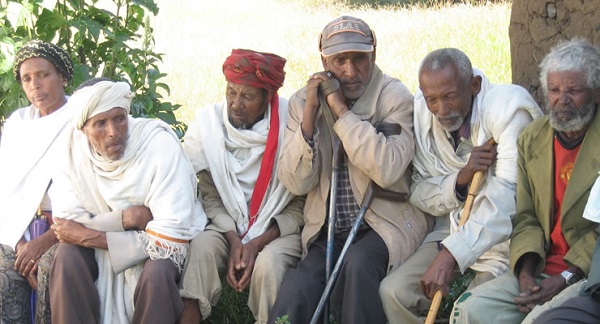
Ministry of Health stated that medical intervention in leprosy was evidently successful in enabling Ethiopia become one of the countries that have achieved the WHO Leprosy elimination target.
By Bilal Derso (The Ethiopian Herald) |
Cheru Gebre ,54, had been infected by leprosy causing germ when he was 12. His parents did their best to see their child free from the disease. But, they were deceived by a wrong attitude held in the community: ‘considering the disease as curse, demonic possession and hereditary.’
“Had they known the real cause of the disease, they could have taken me to hospital.”
Unfortunately, Cheru sustained some damages on his hands and feet.
Physicians say microscopic germ known as mycobacterium leprae caused the disease. It can occur to any one of the society regardless of the living standard, age, whatsoever.
After following medical treatments for 11 years at All African Leprosy, TB and Rehabilitation and Training Center (ALERT), Cheru departed the infection for good.
READ: Ending Child Marriage and FGM in Ethiopia
Nevertheless, the wrong and long-held attitude affected many people in the world particularly in developing countries.
Tribute to the collaborative efforts of stakeholders and the government, leprosy cases have now dropped from 80,000 in 1985 to 3,051 in 2016.
Stakeholders and the government renewed commitments to create a leprosy related disability free generation during an occasion organized to mark 18th World Leprosy Day in Dessie town, Amhara State.
Leprosy prevention and control in Ethiopia started in the 50’s. And the country has five leprosy referral centers namely: Bisidimo, ALERT, Boru Meda, Gambo and Kuyera.
Besides, six additional hospitals are in the pipeline in places new cases are observed.
During a visit to Boru Meda Hospital, situated some 10km east of Dessie in Amhara region, Hospital General Manager Dawit Kidane told The Ethiopian Herald that specialized eye and skin treatments, orthopedic surgeries as well as physiotherapy services have been offered to persons affected by the disease.
In collaboration with German Leprosy and Relief Association (GLRA), the hospital has also granted medicines and supportive devices.
Noting that the hospital is the only facility specialized in leprosy, in northern parts of the country, he called on the government and other stakeholders to support it with the needed human and material.
Established in 1955, Boru Meda Hospital cares over 100 leprosy-related cases per day. It has also 120 beds for its inpatients.
READ: Supporting Progress toward Trachoma Elimination in Ethiopia
For his part, GLRA country representative Ahmed Mohammed stated that the association has supported government’s efforts of curtailing the spread of leprosy in all financial, material and technical means.
Labor and Social Affairs State Minister Tadelech Dalecho, who also attended the event, said the government is playing a pivotal role in integrating persons affected by leprosy.
Tadelech stated that the government is implementing international conventions which it endorsed integrating them with its various programs.
She also highlighted that activities were underway to raise awareness of the general public as well as health professionals on the infection.
Ministry of Health Disease Prevention Directorate Representative Taye Letta stated that medical intervention in leprosy was evidently successful in enabling Ethiopia become one of the countries that have achieved the WHO Leprosy elimination target of less than one case per 10,000 in 1999.
Taye said that new cases remained the same for the past ten years and in 2015/16 a total of 3,051 new leprosy cases were reported.
He also indicated that the government had designed a five-year plan to control new leprosy cases.
Ethiopia aligns its program with WHO’s Global Leprosy Strategy 2016-2020 aimed at reinvigorating efforts of leprosy control through ensuring political commitment and availing adequate resources for leprosy programs.
Source: The Ethiopian Herald
——
Other stories:
- Supporting Progress toward Trachoma Elimination in Ethiopia
- Osborne Head and Neck Institute: Ethiopia Medical Mission Trip
- Ethiopia Bans Medicalization of Female Genital Mutilation (FGM)
- Ethiopia’s Ministry of Health Launched National Health Data Dictionary
- Bogaletch Gebre: Almost All Girls Were Cut in Her Ethiopian Village. Not Anymore, Thanks to Her.
